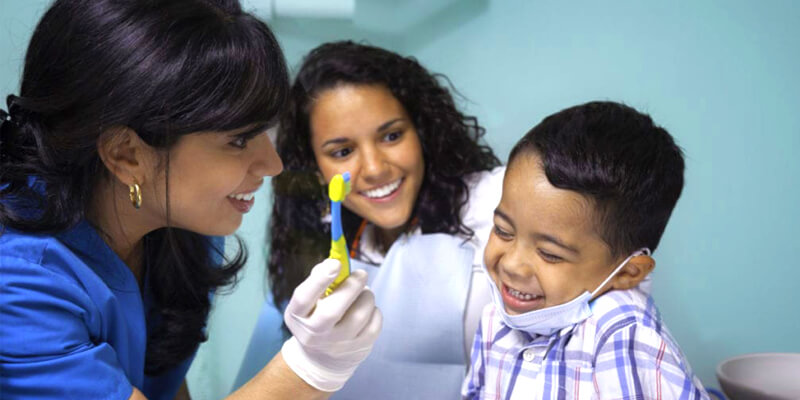
Treating special needs patients can be challenging and rewarding — all in the same breath! Many are faced with difficulties ranging from physical to intellectual and many times a combination of both. Take Autism for example: it is an intellectual disability often accompanied by physical limitations and can come with oral manifestations. One of the most difficult challenges on the part of the dental provider is helping the patient and caregiver understand the importance of home care.
Overcoming Challenges with Visual Learning
Multiple medications can be used to treat the symptoms of a disorder, which in turn increases caries risk. Combined with the frequency of damaging oral habits, such as chewing on non-food items, personal hygiene care is often less than optimal.
Most people are visual learners, and this can be especially true for special needs patients who can struggle with grasping abstract ideas without a visual aide. We can tell them how and where to brush or explain caries, however without being able to show what we see the patient often won’t understand.
One of the easiest ways to educate a patient is the show-tell-do method. That method has evolved with the ability to use intraoral imaging to provide a tour of the mouth. This visual experience helps dental providers explain the needs to a patient and allows them to see what we see — rather than asking them to try to imagine it. And pictures clearly communicate the value of treatment to caregivers.
Showing the patient and/or caregiver areas of concern not only educates, it provides a valuable record of reference for comparison at future appointments.
Meeting Special Needs Dental Patients Outside Clinical Settings
If meeting special needs patients outside traditional clinical settings, teledentistry provides value in both synchronous and asynchronous modalities. Settings where teledentistry might help meet the need of special needs dentistry include at group homes or at patient’s residence if they are unable to be seen in a traditional setting. For many special needs patients, anxiety can be overwhelming when in unfamiliar environments and seeing multiple providers can provide too much stimulation. Implementing intraoral imaging shared via teledentistry not only allows the dentist to review finding from a distance it also will involve the patient and viewing images can provide a positive experience.
One unique feature of TeleDent for these kinds of use cases is its ability to work offline and then later sync to the cloud when a connection is available. A hygienist could capture intraoral images for review without an internet connection and later share the files with a reviewing dentists.
Teach How They Learn
Implement the use of visual aides and reminders for home care and take intraoral images for reference and education purposes, when possible, to make it more than just a learning experience. If they can’t learn how we teach then we need to adjust to teaching how they learn.
